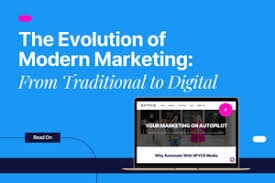The Digital-First Revolution: Why Today’s Smartest Businesses Start Online
In a quiet apartment in Arlington, Texas, Iris flips open her laptop while her dog Mickey snoozes nearby. She’s part of a growing wave of workers and businesses living entirely online. Not just because it’s easier—but because it’s the only way that truly works now. That’s the heart of the digital-first movement: creating businesses that are designed to exist and thrive in a digital world, right from the start.
This isn’t about “adding a website” or “starting a social media account.” It’s about flipping the whole thing. Building the business with the internet at the center of the plan, not as a support system.

What Digital-First Actually Means
In the past, you built a shop, hired staff, printed out ads, and maybe later added a website. That’s a traditional model. A digital-first business flips it. It builds an online system first—maybe even only online—and everything else comes second.
Picture companies like Dropbox or Duolingo. Their storefront is the website. Their customer support runs through chatbots and support tickets. Their value lives in code, not inventory.
For digital-first companies, digital isn’t a tool—it’s the whole engine.
Why This Shift Took Off
Tech didn’t just change things. It forced change. Think about the rise of remote work, especially during the pandemic. Suddenly, physical offices weren’t available. Meetings moved to Zoom, shopping happened on apps, and classes turned into Google Docs and YouTube links. The businesses that couldn’t adapt? A lot of them vanished.
The ones that made it—often without missing a beat—had one thing in common: their systems were already digital-first, or they made that shift fast.
Key Traits of a Digital-First Model
Let’s break it down. What makes a business “digital-first”? There’s no perfect formula, but most share these traits:
- Everything online-first: From how teams collaborate to how customers reach out.
- Low overhead: Without a physical space, costs stay lean.
- Remote work built-in: Teams don’t just tolerate remote—they’re built to handle it.
- Data-backed decisions: Every click, pause, and purchase feeds back into smart decisions.
- Quick changes: Because the systems are flexible, they can shift fast when needed.
Companies That Get It Right
Netflix isn’t just about movies. It’s about data, patterns, and knowing what you’ll probably watch next—before you do. That level of insight only comes from being digital-first.
Then there’s Canva. Instead of expensive design software with clunky downloads, it’s all browser-based. You don’t install anything. You just log in, create, and go. That model only works if your business is born online.
And on a smaller scale, there’s Substack. It lets writers skip the middlemen and go straight to readers—via email. It turned digital newsletters into real careers.
The Upside of Being Digital-First
There are huge benefits here. Startups can move faster. Overhead costs drop. You can work with talent anywhere in the world—not just the people who live nearby. You can test products quickly, get feedback faster, and adjust on the fly.
It’s not just about being modern. It’s about being responsive.
Customers like that. They like fast answers, clean apps, and services that actually feel like they were made for the way we live now—on phones, in browsers, on the go.
But It’s Not Always Easy
All that speed and flexibility? It comes at a cost. There’s the pressure of constant updates, new features, and keeping up with digital security. A single bad review or data leak can spread quickly.
And not every team is ready for remote-first life. Managing people you never meet in person takes effort. Clear communication, trust, and good digital tools are the glue that holds it all together.
Is It Right for Every Business?
Not really. A coffee shop can’t go fully digital. Neither can a dentist. But even these businesses are starting to lean on digital tools: scheduling apps, online payments, digital receipts, social media promotion.
So, it’s not about being completely digital—it’s about being smartly digital. Start where it makes sense, and build from there.
Where We’re Headed
Digital-first won’t stay a buzzword for long. Pretty soon, we’ll stop saying “digital-first” altogether. It’ll just be “normal.”
Smart systems will run quietly in the background. AI might write your emails or schedule your team. Customers won’t even notice—they’ll just know things work better.
For businesses, the message is simple: Build like you live online. Because your customers already do.
And for people like Iris—sitting at her laptop, writing code or content, dog curled up nearby—that world already feels like home.




